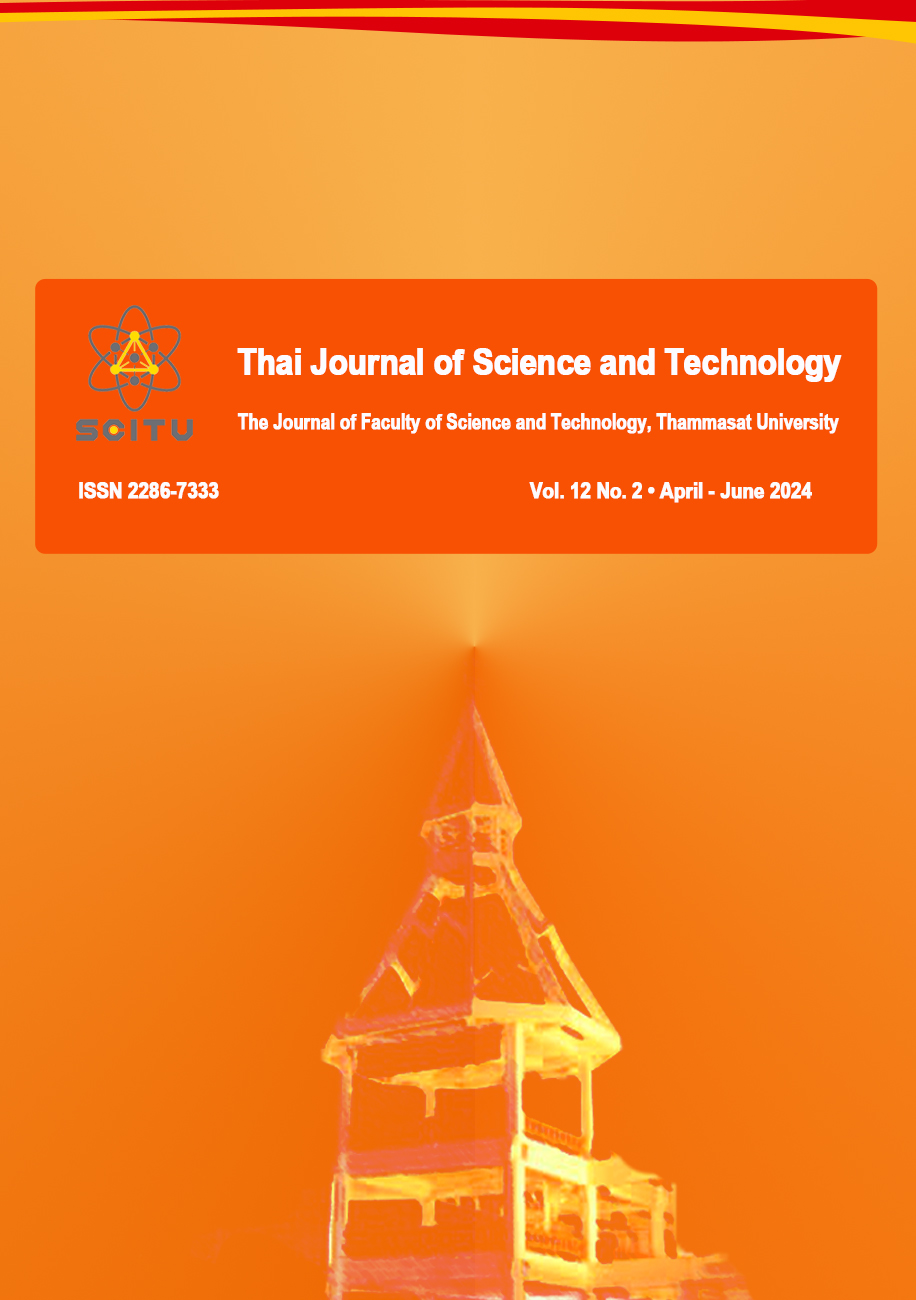Biological Research on Morphological Features of in vitro Porcine Granulosa Cells Culture
Main Article Content
Abstract
The purpose of this research was to study the morphology and culturing porcine granulosa cells (GC) collected from large white pig ovaries with sterile technique. The primary cell culture methods were utilized based on M199 formula (supplemented with 10% HTFBS, 15 µg/mL FSH, 1 µg/mL LH, 1 µg/mL estradiol, 2.2 mg/mL NaHCO3, 0.25 mM pyruvate and 50 µg/mL gentamycin sulfate at high humidified atmosphere with 5% CO2 in 95% air atmosphere at 37°C) at 0, 24, 44-48, 72, 96 and 120 h (short-term culture). The result of culturing GC, using M199 based on cell morphology study, exhibited that, in the beginning, cells were round-shaped and non-ciliated cells. Porcine granulosa cells showed healthy characteristic and changed their morphology from round shape to fibroblast-like morphology, then extending and adhering to the surface of the petri dish. After 24 h, they multiplied and spread 100% all over the culture dish and then turned sharp at both head and bottom and expanded. As cultured for 48, 72, 96, 120 h. they were expanded more, fibroblast-like shape, epithelial-like isolated and cluster group cells under microscopy. The viability of GC culture for 0, 24, 48, 72, 96 and 120 h were 100, 98, 95, 92, 90, and 86%, respectively. The advantages of this research were: that it enabled us to culture GC cells collected from the slaughterhouse efficiently by using short-term culture methods in culture medium; that we were capable of studying the morphological features, as well as the variance of the cell shape in the laboratory; sub-culture cells and long-term culture can possibly be further developed as granulosa cell lines; and that the cells could be utilized practically in innovative biological research field, thus helping economize costs and eliminate the animal experiments correctly in accordance with moral norms.
Article Details

This work is licensed under a Creative Commons Attribution-NonCommercial-NoDerivatives 4.0 International License.
บทความที่ได้รับการตีพิมพ์เป็นลิขสิทธิ์ของคณะวิทยาศาสตร์และเทคโนโลยี มหาวิทยาลัยธรรมศาสตร์ ข้อความที่ปรากฏในแต่ละเรื่องของวารสารเล่มนี้เป็นเพียงความเห็นส่วนตัวของผู้เขียน ไม่มีความเกี่ยวข้องกับคณะวิทยาศาสตร์และเทคโนโลยี หรือคณาจารย์ท่านอื่นในมหาวิทยาลัยธรรมศาสตร์ ผู้เขียนต้องยืนยันว่าความรับผิดชอบต่อทุกข้อความที่นำเสนอไว้ในบทความของตน หากมีข้อผิดพลาดหรือความไม่ถูกต้องใด ๆ
References
Areekijseree, M., & Vejaratpimol, R. (2006). In vivo and in vitro study of porcine oviductal epithelial cells, cumulus oocyte complex and granulosa cell: A scanning electron microscopy and inverted microscopy study. Micron, 37(8), 707-716.
Areekijsere, M., & Veerapraditsin, T. (2008). Characterization of porcine oviductal epithelial cells, cumulus cells and granulosa cells-conditioned medium and their ability to induce acrosome reaction on frozen-thawed bovine spermatozoa. Micron, 39(2), 160-167.
Chen, J.L., Carta, S., Soldado-Magraner, J., Schneider, B.L., & Helmchen, F. (2013). Behavior-dependent recruitment of long-range projection neurons in somatosensory cortex. Nature, 499, 336-340.
Gumlungpat, N., Youngsabanant, M., & Rattanayuvakorn, S. (2023). Comparison between hormone and porcine follicular fluid secretion supplements on in vitro oocyte maturation. Thai Journal of Science and Technology, 11(2), 22-36.
Lin, M-T. (2004). Establishment of an immortalized porcine granulosa cell line (PGV) and the study on the potential mechanisms of PGV cell proliferation. The Keio Journal of Medicine, 54(1), 29-38.
Panyarachun, B., et al. (2021). Impact of porcine follicular fluid during folliculogenesis as a supplement on the primary cell culture of oviductal epithelial cells. Science, Engineering and Health Studies, 15(1), 21030008.
Pongsawat, W., & Youngsabanant, M. (2019). Porcine cumulus oocyte complexes (pCOCs) as biological model for determination on in vitro cytotoxic of cadmium and copper assessment. Songklanakarin Journal of Science and Technology, 41(5), 1029-1036.
Sanmanee, N., & Areekijsere, M. (2009). In vitro toxicology assessment of cadmium bioavailability on primary porcine oviductal epithelial cells. Environmental Toxicology and Pharmacology, 27(1), 84-89.
Xiaowei, N., Wenjie, S., Daorong, H., Qiang, L., Ronggen, W., & Yong, T. (2019). Effect of Hyperin and Icariin on steroid hormone secretion in rat ovarian granulosa cells. Clinica Chimica Acta, 495, 646-651.
Youngsabanant, M., & Mettasart, M. (2020). Changes in secretory protein of porcine ampulla and isthmus parts of oviduct on follicular and luteal phases. Songklanakarin Journal of Science and Technology, 42(4), 941-947.
Youngsabanant, M., Rabiab, S., Gumlungpat, N., Panyarachun, B. (2019). In vitro characterization and viability of Vero cell lines supplemented with porcine follicular fluid (pFF) proteins study. Science, Engineering and Health Studies, 13(3), 143-152.
Youngsabanant, M., & Rabiab, S. (2020). Potential Effect of porcine follicular fluid (pFF) from small-, medium-, and large-sized ovarian follicles on HeLa cell line viability. Science, Engineering and Health Studies, 14(2), 141-151.
Youngsabanant-Areekijseree, M., Tungkasen, H., Srinark, C., & Chuen-Im, T. (2019). Determination of porcine oocyte and follicular fluid proteins from small, medium, and large follicles for cell biotechnology research. Songklanakarin Journal of Science and Technology, 41(1), 192-198.
Youngsabanant, M., Gumlungpa, N., Panyarachun, B., Chuen-Im, T., & Panyarachun, P. (2021). An establishment of long-term culture of porcine granulosa cells and comparison of DMEM and M199 for cell propagation. Thai Journal of Science and Technology, 10(2), 167-172.


